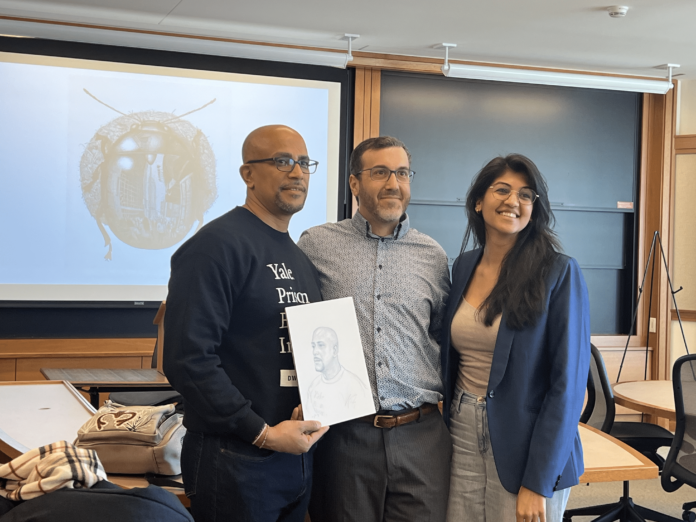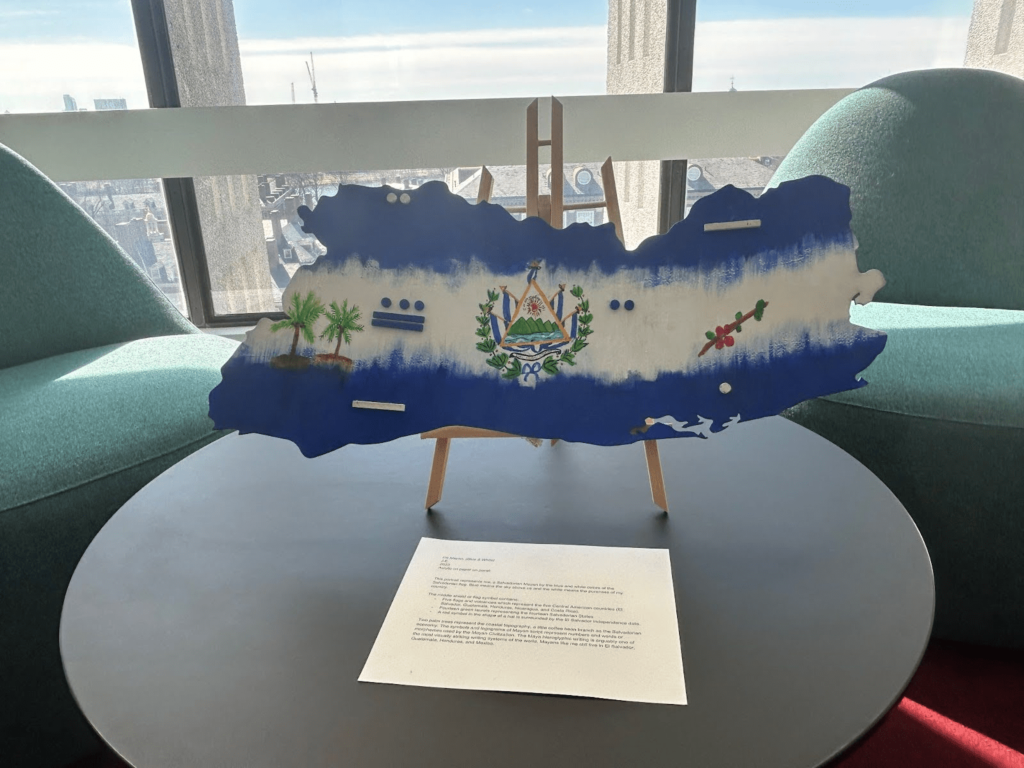By Patrick Healy ’26, Ibrahim Bharmal ’25, Tobi Omotoso ’25, Zachari Curtis ’26
Via The Harvard Law Record

The Harvard Defenders held their annual Jack T. Litman Symposium on Friday, with a day-long agenda that endeavored to bring the voices of incarcerated people to campus through artistic expression.
Planned by Litman Fellowship co-directors Apoorva Dixit, HLS 24′ and Deborah Alexis, HLS 25′, the symposium centered four artists engaged in anti-carceral artwork: Mary Enoch Elizabeth Baxter, a playwright and artist famous for her musical about her pregnancy while incarcerated; Mark Loughney, an artist responsible for a collection of 800 individual portraits of prisoners; Eric Anderson, Executive Director of Justice4Housing, a Boston-based housing justice and anti-carceral organization; and Mollie Hosmer-Dillard, an art teacher for incarcerated youth and adults through the University of Utah.
The symposium began in the morning with a display at the Smith Center of a number of paintings by Hosmer-Dillard’s students and poetry readings by Anderson.
Two dozen audience members filled a room on the tenth floor in the Smith Campus Center to hear Anderson and look at artwork created by incarcerated people. Pieces included self-portraits, depictions of nature, and creative renderings of countries. Anderson read a number of poems, including “23 and 1,” about his years spent in solitary confinement.

Following the morning display, a panel of all four artists answered questions from attendees over lunch. Each artist weighed in on what brought them to their artwork. “I’ve always been an artist. It gave me an opportunity to understand what I was going through” said Baxter, whose musical “Consecration to Mary: Ain’t I a Woman?” discusses her entrance into prison nine months pregnant and her 43-hour labor while shackled.
The panelists shared unique insights on the effects of prison, and how those who are and were incarcerated can move past their detention “Prison alienates people from a sense of touch. Much of the work I do is about community, is collaborative and is about policy–we use it to change the world,” said Baxter. Hosmer-Dillard added that sharing the work of her students is “exciting to them” and has the added benefit of “[humanizing] the people inside.”
The afternoon included a number of workshops hosted by each of the presenters. One in particular was Loughney’s “Capturing the Human Essence,” an interactive session where he drew an original piece live for an audience. His model for the new drawing was another notable creative in the audience, Hector Rodriguez, known for his vibrant colors and participation in a project sponsored by famous prison abolitionist Mariame Kaba.

While working, Loughney took questions from the crowd about his time in prison, his creative journey, and how he has adjusted to life post-prison. “Using color is almost like a form of resistance to me,” he said. “I still have one foot in prison, you know I’m on parole, at any moment they could yank me back in.” He also shared the story behind naming his collection “Pyrrhic Defeat,” which was borrowed from a concept described in Jeffrey Reiman’s 1979 book ““The Rich get Richer and the Poor get Prison.” Loughrey described pyrrhic defeat as a theory that “suggests that the criminal justice system fails so badly that it results in a win for the people in power.”
He believed that the phrase was a good label for a project because it was “kind of cryptic” and invites people to learn more about anti-carceralism by asking questions.
After about 50 minutes of discussion and drawing, Loughney pleased the crowd with a brand new depiction of Rodriguez’ visage. While the model admitted the experience of being drawn for nearly an hour was “uncomfortable,” he gleefully added that the sketch looked “a lot different from my mugshot.”
This year’s Litman symposium was exceptional in its ability to bring voices of both formerly and currently incarcerated people into Harvard’s walls. While often these narratives are told through case law, on Friday, incarcerated people used poetry and visual art to tell their stories on their own terms.
For more of Mark Loughney’s artwork visit www.loughneyart.com or his instagram @loughneyart
Follow Mary Enoch Elizabeth Baxter at her instagram
Check out Hector Rodriguez’ artwork at https://boricreates.com/ or his instagram @boricreates
Filed in: Events
Tags: Class of 2024, Class of 2025, Class of 2026, Harvard Defenders
Contact Office of Clinical and Pro Bono Programs
Website:
hls.harvard.edu/clinics
Email:
clinical@law.harvard.edu